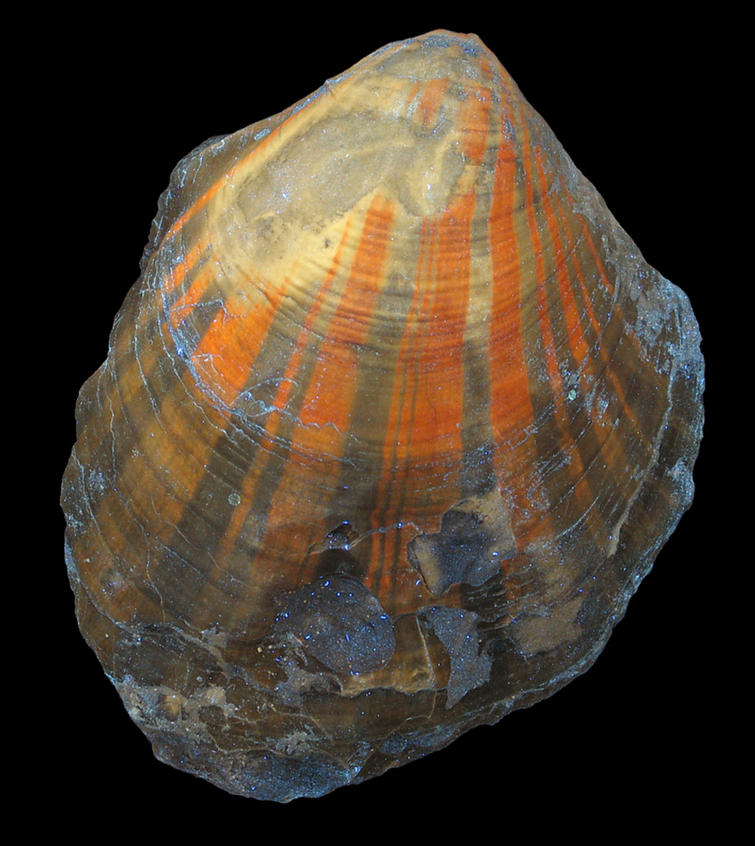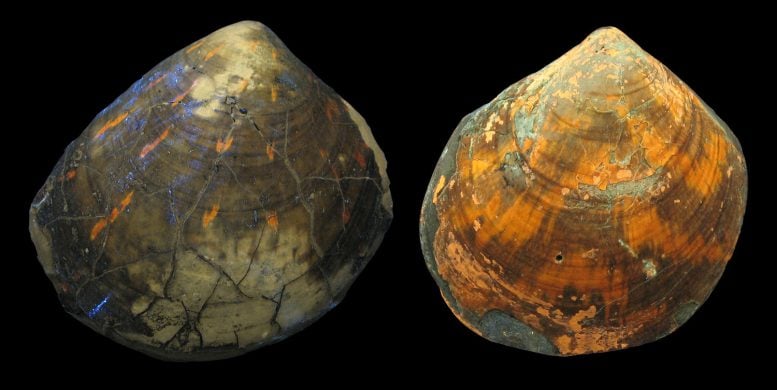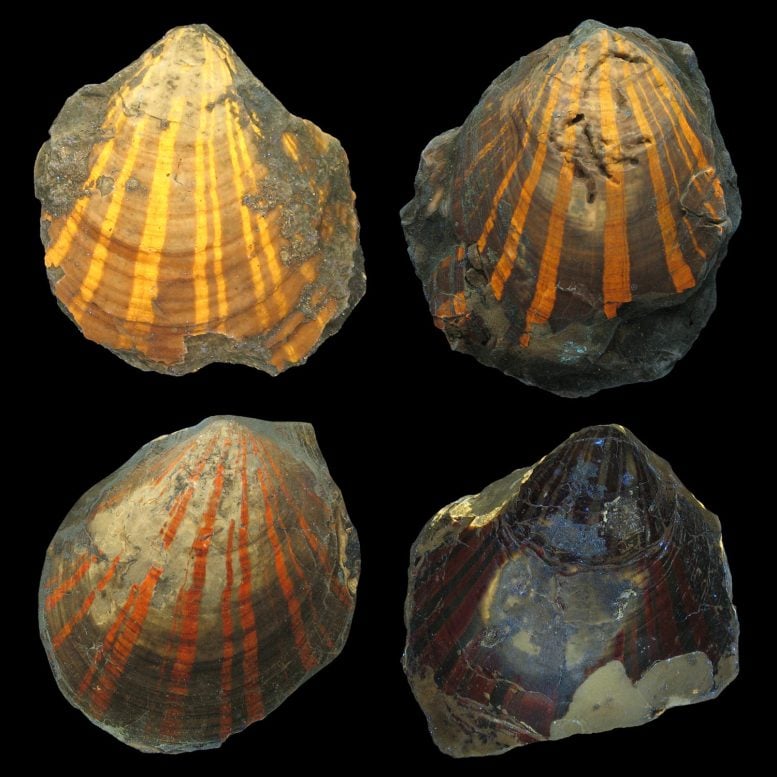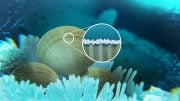
Scallop Pleuronectites from the Triassic period with fluorescent color pattern, under UV light. Credit: Klaus Wolkenstein
A geobiologist from Göttingen University has found a diversity of patterns in 240 million-year-old seashells.
UV light allows you to view intricate structures in fossils that would be impossible to observe in normal daylight. This method has often been used on fossilized seashells from the Earth’s current geological era to reveal color patterns that had long since faded away. According to a new study from the University of Göttingen, fluorescent color patterns may even be detected in 240 million-year-old shells from the Earth’s Mesozoic Era. This makes them the oldest fluorescent color patterns discovered so far. This study’s findings were published in the journal Palaeontology.
Traces of color patterns are extremely rare in Mesozoic Era fossils. However, UV light examination of scallops from the Triassic era — right at the start of the Mesozoic Era — reveals that color patterns are preserved much more often than previously believed. UV light, which is undetectable to the human eye, excites organic compounds in the fossils, causing them to glow. This exposes a surprising variety of color patterns, including many kinds of stripes, zigzags, and flame patterns. The diversity of color patterns is comparable to that of modern seashells seen on a beach.
However, the color patterns of today’s scallops do not show any fluorescence. “In the case of the Triassic shells, fluorescent compounds were only formed in the course of fossilization through oxidation of the original pigments,” explains Dr. Klaus Wolkenstein from the Geosciences Centre at the University of Göttingen, who is currently carrying out research at the University of Bonn. Surprisingly, the fossil shells show different fluorescent colors, depending on the region where they were found.
“The color spectrum ranges from yellow to red with all the transitions in between, which suggests that there were clear regional differences in the fossilization of these scallops,” adds Wolkenstein.
Reference: “Fluorescent colour patterns in the basal pectinid Pleuronectites from the Middle Triassic of Central Europe: origin, fate and taxonomic implications of fluorescence” by Klaus Wolkenstein, 27 October 2022, Palaeontology.
DOI: 10.1111/pala.12625











Be the first to comment on "Glowing Fossils: Fluorescent Color Patterns Found in 240 Million-Year-Old Shells"